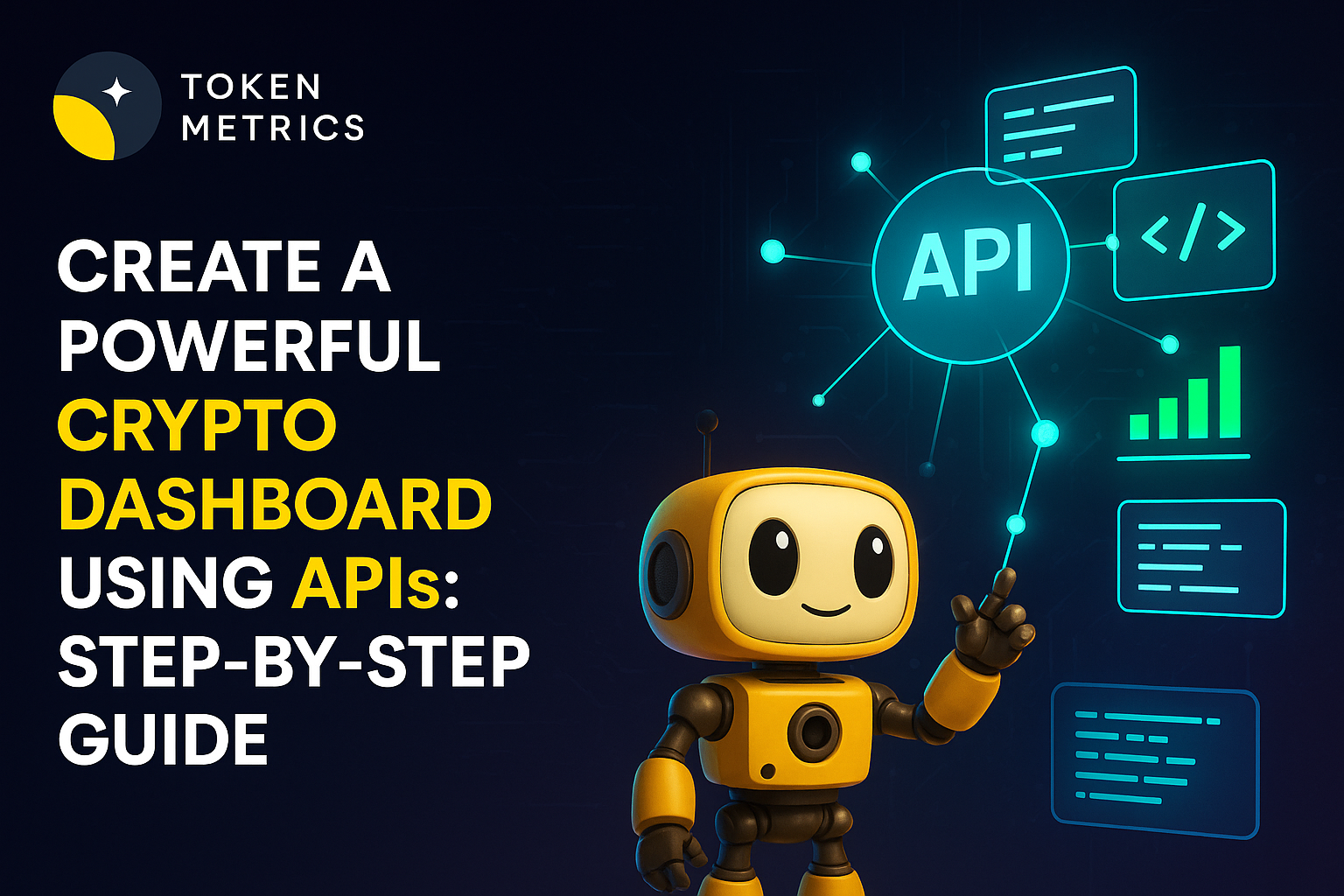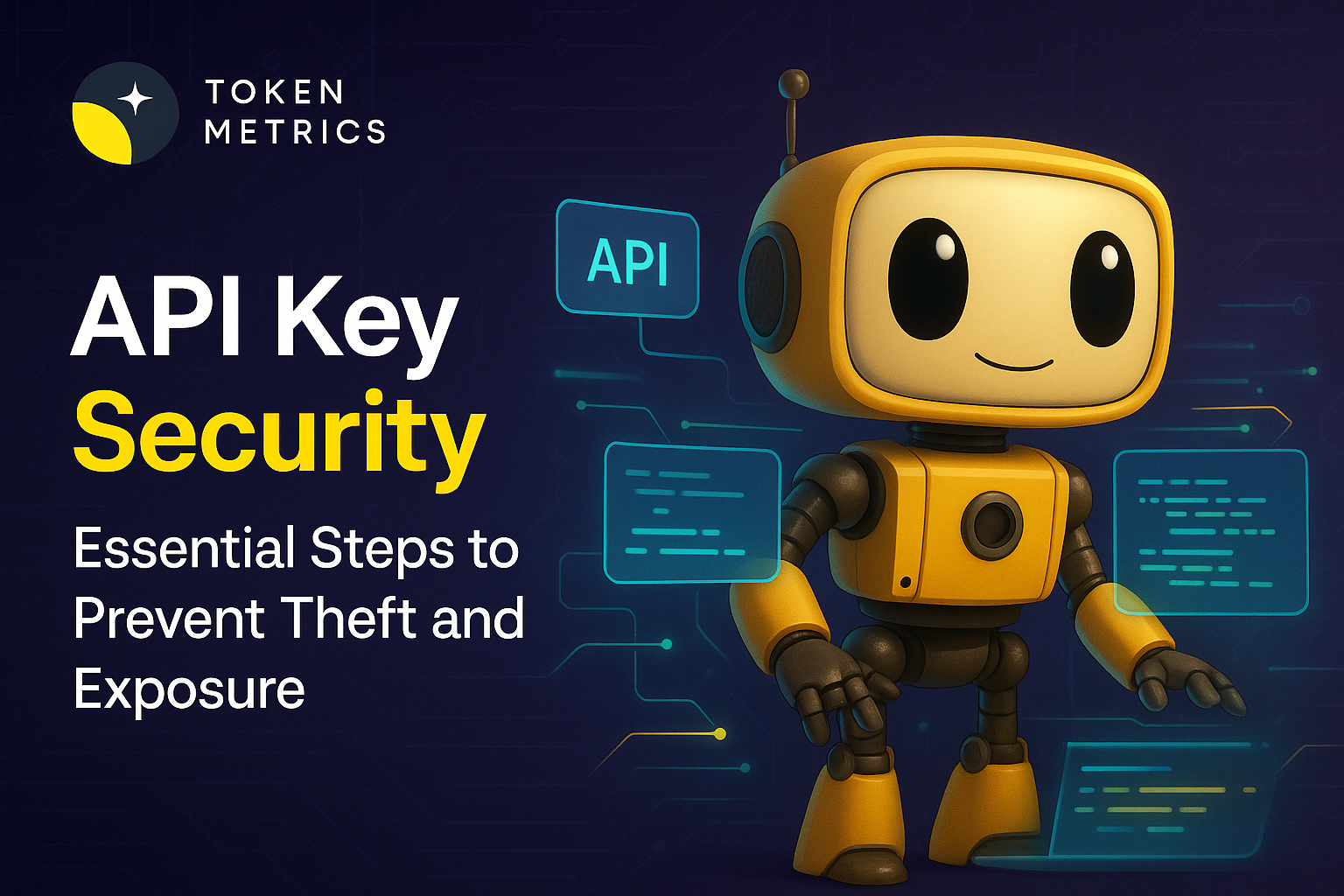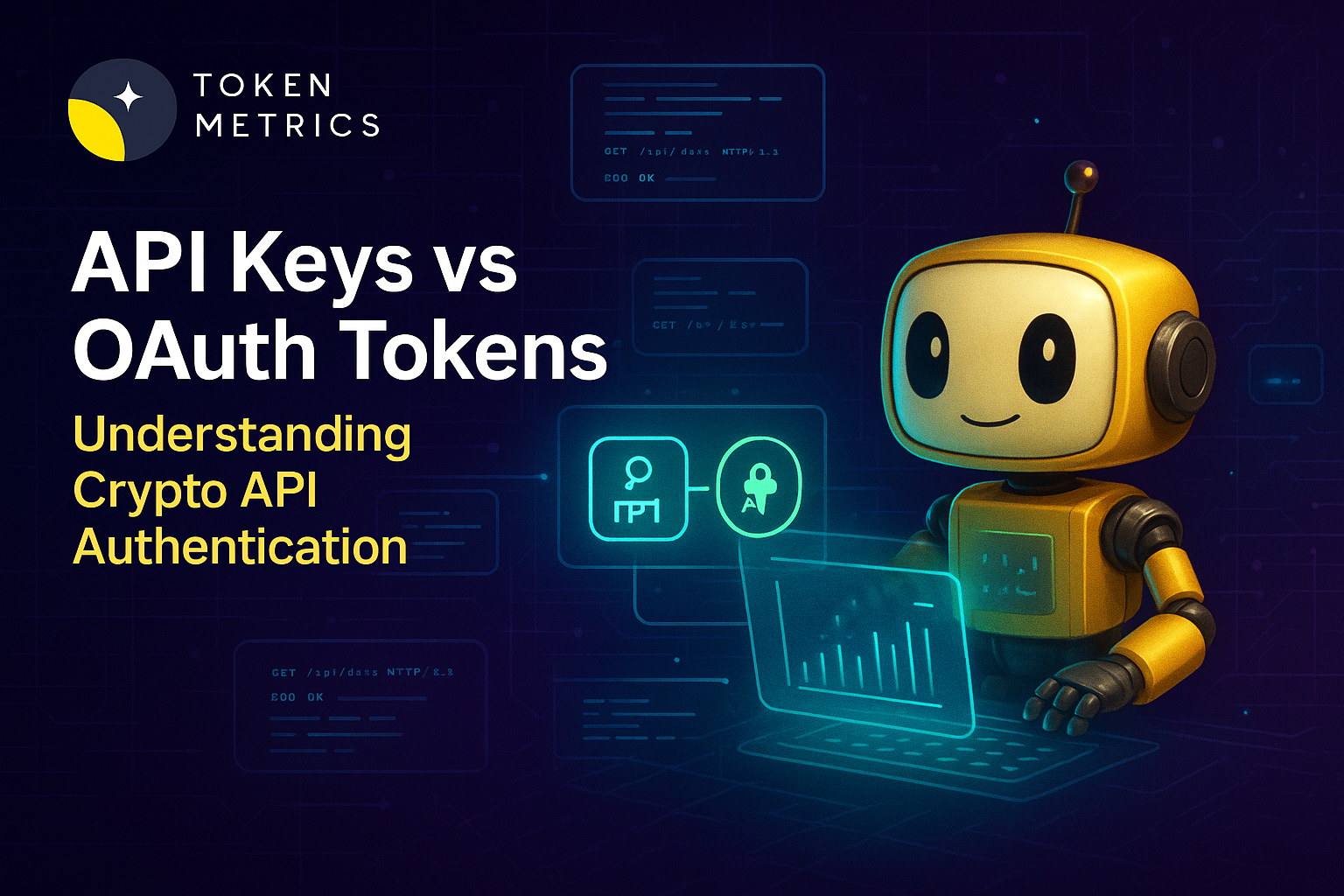Best Crypto Exchanges and Apps in July 2025 – Why Token Metrics Leads in AI Crypto Trading

The crypto market in July 2025 is booming, and investors—from beginners to pros—need the right tools to stay ahead. Whether you're trading Bitcoin, discovering new altcoins, or building an automated strategy, the best crypto exchanges and apps are essential for seamless investing.
In this comprehensive and SEO-optimized guide, we’ll review the top crypto exchanges and mobile apps for July 2025, and explore why Token Metrics stands out as the #1 AI-powered crypto research and trading platform.
What to Look for in a Crypto Exchange or App
Before diving into the top picks, let’s cover what defines a great crypto exchange or trading app in 2025:
✅ Security: 2FA, cold storage, and audit transparency
✅ User Interface: Easy navigation for beginners and advanced tools for pros
✅ Low Fees: Competitive trading, deposit, and withdrawal fees
✅ Variety of Coins: Access to trending and low-cap altcoins
✅ Mobile Functionality: Apps that support full trading, portfolio tracking, and alerts
✅ Research Tools: In-depth market analytics, signals, and alerts
Top 5 Crypto Exchanges and Apps in July 2025
1. Binance – Best for Advanced Trading and Global Liquidity

Binance remains the largest and most liquid centralized exchange globally in 2025. It supports 600+ cryptocurrencies, low trading fees (0.1%), and high-speed performance.
Key Features:
- Spot, margin, and futures trading
- Launchpad and staking products
- Advanced trading dashboard
- Wide mobile app compatibility
Best For: Active traders, global users, and DeFi explorers
2. Coinbase – Best for U.S. Compliance and Beginners

Coinbase continues to dominate the U.S. market due to its strong regulatory reputation and user-friendly interface.
Key Features:
- Easy fiat on-ramp (USD, GBP, EUR)
- High-level security and insurance
- Coinbase Learn to earn crypto while learning
- Now supports Web3 dApps and NFTs
Best For: Beginners, U.S.-based users, and compliant long-term investors
3. Kraken – Best for Security and Institutional Access

Kraken’s strong emphasis on compliance, security, and staking makes it a favorite among institutions and security-conscious users.
Key Features:
- Institutional-grade custody
- Margin and futures markets
- 24/7 customer support
- Transparent proof-of-reserves
Best For: Long-term investors, institutions, and security-focused users
4. Bitget – Best for Copy Trading and Derivatives

Bitget has quickly become one of the most popular apps for copy trading and derivatives in 2025. With advanced tools for automation and mobile execution, Bitget attracts both retail and pro traders.
Key Features:
- Copy trading with top traders
- Low fees on perpetual contracts
- AI-powered trading signals
- Sleek mobile UI
Best For: Derivatives traders, social traders, and mobile-first investors
5. OKX – Best for Web3 and Earn Features

OKX is increasingly becoming a one-stop hub for trading, DeFi, and NFTs. Its Web3 wallet and DEX integration make it ideal for users exploring beyond centralized trading.
Key Features:
- Deep liquidity and low fees
- Integrated Web3 wallet
- Earn, staking, and lending products
- NFT marketplace access
Best For: Hybrid CEX/DEX traders and passive earners
Why Token Metrics Is the Best AI Crypto Research and Trading Platform
While exchanges allow you to execute trades, Token Metrics empowers you with the intelligence to make the trades.
🔍 What Is Token Metrics?
Token Metrics is an AI-powered crypto research platform that combines:
- In-depth token ratings (Investor & Trader Grades)
- Real-time buy/sell signals
- Daily Moonshot altcoin picks
- Custom alerts and integrated swap
- Market indices and portfolio tools
It’s not an exchange—it's your personal crypto analyst, portfolio strategist, and AI trading assistant all in one.
📈 Top Features of Token Metrics in 2025
1. Moonshots – Discover Early-Stage 100x Altcoins
Token Metrics AI scans 6,000+ tokens daily to find low-cap tokens with massive upside potential. Each Moonshot comes with:
- Entry date and price
- Live ROI tracking
- Real-time grades and volume data
- Buy button via on-chain swap
2. AI Token Grades
- Trader Grade (short-term momentum)
- Investor Grade (long-term fundamentals)
- Backtested across bull and bear markets for accuracy
3. Buy/Sell Signals
- AI-generated Bullish and Bearish indicators
- Available via email, Telegram, Slack, and more
- Perfect for scalping or swing trading
4. Portfolio Management Tools
- Prebuilt indices by sector, chain, or risk
- Live PnL tracking
- Alerts based on grade changes or price movements
5. Unified Crypto API (MCP Server)
- For developers building bots and agents
- Integrates with OpenAI, Claude, Cursor, and Raycast
- One key, all clients, consistent data
🛠️ Token Metrics vs. Crypto Exchanges: A Powerful Combo

Combine Token Metrics for research and crypto trading = the smartest crypto trading stack in 2025.
How to Use Token Metrics with Your Exchange
- Research Tokens on Token Metrics
- Visit tokenmetrics.com
- Check the Ratings or Moonshots tab
- Evaluate Trader Grade, price momentum, and live signals
- Visit tokenmetrics.com
- Click “Buy” on Token Metrics
- Use the integrated on-chain swap widget to buy directly
- Or copy the token address and execute the trade on your preferred exchange or DEX
- Use the integrated on-chain swap widget to buy directly
- Set Alerts and Monitor
- Use custom alerts to get notified on Telegram, email, or Slack
- Monitor Moonshots' ROI in real time
- Use custom alerts to get notified on Telegram, email, or Slack
Final Thoughts: Choose Intelligence, Not Just Access
Crypto exchanges are your access points to the market. But intelligence is what drives profitability.
In July 2025, the smartest investors are:
- Using Binance, Coinbase, or Bitget for execution
- Using Token Metrics for research, strategy, and automation
Whether you're trading daily or building a long-term portfolio, Token Metrics is the AI brain behind your crypto success.
Ready to Start?
- ✅ Create a free account at tokenmetrics.com
- ✅ Access token ratings, Moonshots, and live signals
- ✅ Combine with your favorite exchange for execution
- ✅ Build a smarter, faster, more profitable crypto strategy today
Create Your Free Token Metrics Account

.png)




%201.svg)
%201.svg)


%201.svg)










.svg)




.png)